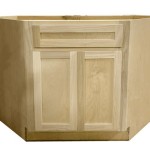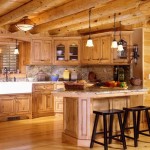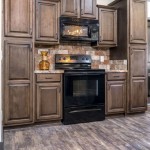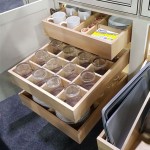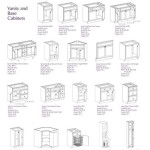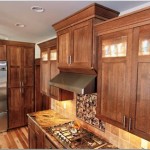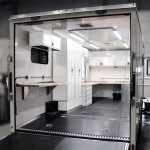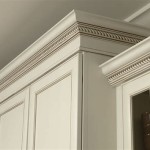The Perfect Tool Chest Side Cabinet For Any Craftsmanship Equipment
A well-organized workspace is essential for efficient and precise craftsmanship. In any workshop, whether it's dedicated to woodworking, metalworking, automotive repair, or general DIY projects, tools are the lifeblood. Maintaining these tools in an ordered and accessible manner significantly impacts productivity and the quality of the finished product. A tool chest side cabinet is a valuable addition to any workshop, providing extra storage space and organizational capabilities that can greatly enhance workflow.
The ideal tool chest side cabinet offers a solution to the common problem of overflowing tool chests and cluttered workbenches. It provides designated storage for various tools, accessories, and materials, keeping them within reach while freeing up valuable workspace. The right choice of side cabinet depends on several factors, including the type and quantity of tools, the available space, and the specific needs of the craftsman. From small hobbyists to professional tradespeople, there’s a model designed to accommodate different requirements.
This article examines the key features and considerations when selecting a tool chest side cabinet and how they contribute to enhancing organization and functionality in the workshop.
Key Considerations: Size and Capacity
The first aspect to evaluate when choosing a tool chest side cabinet is its size and storage capacity. This involves considering both the physical dimensions of the cabinet and the volume of tools and equipment it can hold. It is essential to select a cabinet that fits comfortably within the available space in the workshop without obstructing movement or access to other equipment. Measuring the designated location for the cabinet is a crucial first step. Consider the height, width, and depth limitations to ensure a proper fit.
Beyond the physical dimensions, the internal storage capacity is equally important. Analyze the types and quantities of tools that need to be stored. Consider not only the current inventory but also potential future acquisitions. Different cabinet models offer varying configurations of drawers, shelves, and compartments. Drawers are ideal for smaller tools, fasteners, and accessories, while shelves are better suited for larger items like power tools and toolboxes. The number and depth of drawers should be adequate to accommodate the collection of tools without overcrowding. Overcrowded drawers can make it difficult to find specific tools and can also damage the tools themselves.
The load capacity of each drawer and shelf is another critical factor. Ensure that the cabinet is sturdy enough to support the weight of the tools without buckling or collapsing. Manufacturers typically specify the weight capacity of each drawer and shelf. Exceeding these limits can compromise the structural integrity of the cabinet and potentially lead to accidents. Also consider the overall weight capacity of the entire side cabinet, especially if it will be mounted on a tool chest.
Consider the organization of the tools within the cabinet. Some craftsmen prefer to group tools by type, such as wrenches, screwdrivers, and pliers. Others prefer to organize them by project or application. The internal layout of the cabinet should facilitate the chosen organization method. Drawer dividers, tool trays, and custom inserts can be used to further optimize the organization and prevent tools from shifting during movement.
Material and Construction: Durability and Longevity
The material and construction of a tool chest side cabinet directly impact its durability and lifespan. The cabinet should be able to withstand the rigors of a workshop environment, including impacts, scratches, and exposure to chemicals and solvents. Common materials used in tool chest construction include steel, aluminum, and plastic. Each material has its own advantages and disadvantages.
Steel is the most common material for high-quality tool chests and side cabinets. Steel cabinets are known for their strength, durability, and resistance to dents and scratches. The gauge of the steel used in the construction is an important indicator of its strength. Lower gauge numbers indicate thicker steel, which is more resistant to deformation. Look for cabinets made from at least 18-gauge steel for optimal durability. Powder coating is a common finish for steel cabinets. Powder coating provides a protective layer that resists rust, corrosion, and scratches. It is also available in a variety of colors, allowing craftsmen to customize the appearance of their workspace.
Aluminum is a lighter alternative to steel. Aluminum cabinets are easier to move and transport, making them suitable for mobile applications. Aluminum is also naturally corrosion-resistant, making it a good choice for humid or corrosive environments. However, aluminum is generally less durable than steel and may be more susceptible to dents and scratches.
Plastic cabinets are the least expensive option. Plastic cabinets are lightweight and easy to clean, but they are also the least durable. Plastic cabinets are typically suitable for storing lighter tools and accessories. They may not be able to withstand the weight of heavy tools or the impacts of a busy workshop environment. The quality of the plastic is important. Look for cabinets made from high-density polyethylene (HDPE) or polypropylene (PP) for greater durability. The construction method also affects the durability of the cabinet. Welded seams are stronger and more durable than bolted or riveted seams. Reinforced corners and edges can also help to prevent damage from impacts.
Drawer slides are a critical component of a tool chest side cabinet. The drawer slides should be smooth, reliable, and able to support the weight of the tools in the drawers. Ball-bearing slides are the most common type of drawer slide. Ball-bearing slides provide smooth and effortless operation, even when the drawers are fully loaded. Look for slides with a high weight capacity and a full-extension design, which allows the user to access the entire contents of the drawer. Some cabinets also feature self-closing drawers, which prevent the drawers from slamming shut and protect the tools inside.
Organizational Features and Accessories
A well-designed tool chest side cabinet should offer a variety of organizational features and accessories to maximize its functionality. These features can help to improve efficiency, reduce clutter, and protect valuable tools. Drawer dividers are a simple but effective way to organize tools within drawers. Drawer dividers can be used to create compartments for different types of tools, preventing them from mixing together and making it easier to find what is needed. Drawer dividers are available in a variety of materials, including plastic, foam, and metal. Some cabinets come with pre-installed drawer dividers, while others offer them as optional accessories.
Tool trays are another useful organizational accessory. Tool trays are designed to hold specific types of tools, such as sockets, wrenches, or screwdrivers. Tool trays can be placed in drawers or on shelves, providing a convenient way to keep tools organized and within reach. Tool trays can also help to protect tools from damage by preventing them from rubbing against each other.
Custom inserts are a more advanced organizational solution. Custom inserts are designed to fit specific tools or sets of tools. Custom inserts can be made from foam, plastic, or metal. Custom inserts provide a secure and organized storage solution for valuable tools. They can also help to prevent tools from being lost or stolen. Some companies offer custom insert design and manufacturing services and others opt for custom insert DIY solutions to achieve the proper organizational structure for their tools.
Power strips and USB ports are a convenient addition to a tool chest side cabinet. Power strips can be used to provide power to power tools, charging stations, and other electronic devices. USB ports can be used to charge mobile phones, tablets, and other USB-powered devices. A power strip mounted inside the cabinet can help eliminate the need for extension cords and keep the workspace tidy.
Lighting can also enhance the functionality of a tool chest side cabinet. LED lights can be installed inside the cabinet to provide better visibility of the tools and equipment. LED lights are energy-efficient and long-lasting. They also produce less heat than traditional incandescent lights. Lighting can be particularly useful in dimly lit workshops.
Locking mechanisms are essential for security. A locking mechanism prevents unauthorized access to the tools and equipment stored in the cabinet. Different cabinets offer different types of locking mechanisms, including key locks, combination locks, and electronic locks. Key locks are the most common type of locking mechanism. Combination locks offer a higher level of security. Electronic locks are the most advanced type of locking mechanism, offering features such as remote access and audit trails.
Mobility is an additional consideration for some users. Tool chest side cabinets can be either stationary or mobile. Stationary cabinets are designed to be placed in a fixed location. Mobile cabinets are equipped with casters, allowing them to be easily moved around the workshop. Mobile cabinets are a good choice for users who need to move their tools frequently. The casters should be sturdy and able to support the weight of the cabinet and its contents. Locking casters are also a useful feature, preventing the cabinet from rolling away during use.

10 Best Auto Mechanic Tool Boxes For 2025 The Family Handyman

Craftsman Launches V Series Pro Tool Storage

New Craftsman Fully Featured 41 Tool Storage Chest And Rolling Cabinet

Best Garage Toolboxes For 2025 Tested

Versasystem Garage Storage Cabinets And Chests Craftsman

11 Diffe Types Of Tool Boxes Artman

7 Ways To Organize Your Tools

New Craftsman Fully Featured 41 Tool Storage Chest And Rolling Cabinet

Craftsman Expands Premium V Series Line To Include Metal Tool Storag

Craftsman Storage Sedalia Missouri Chest Woodworker S Journal
Related Posts

